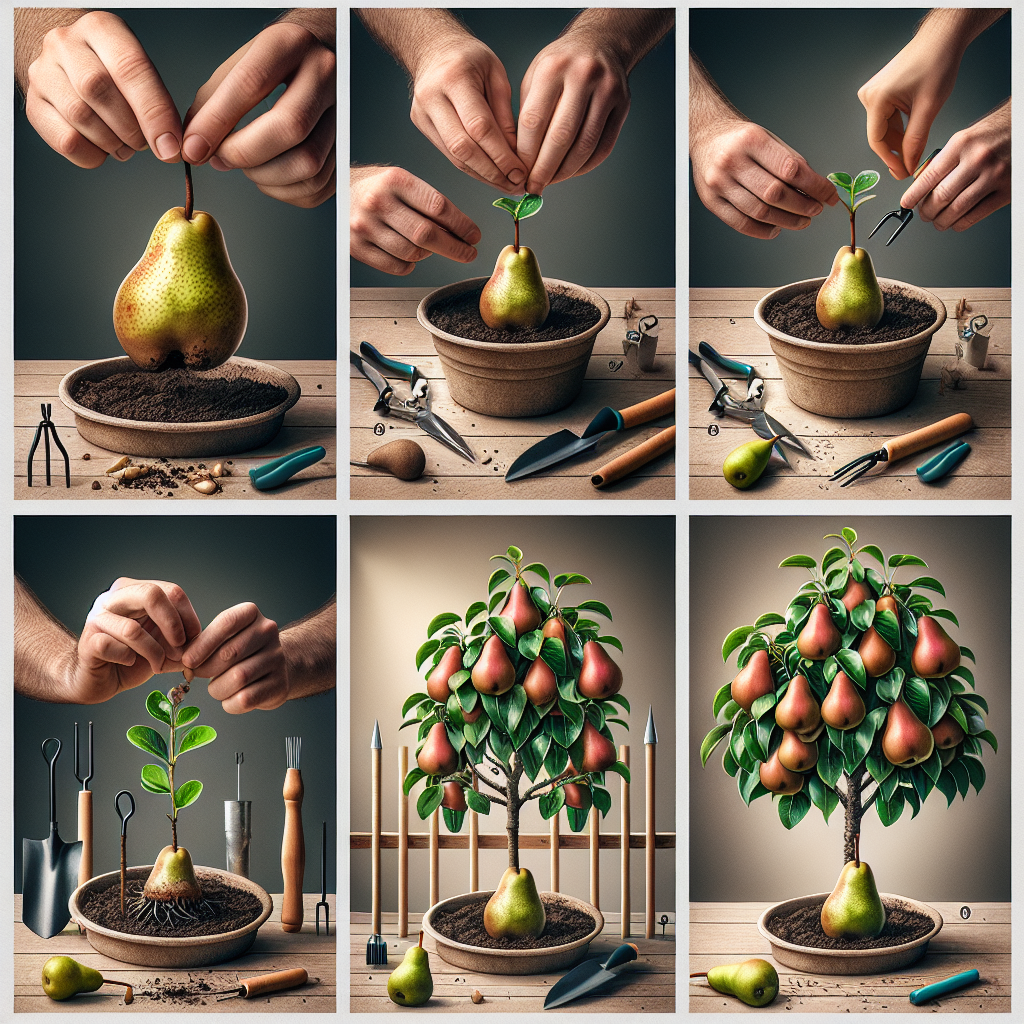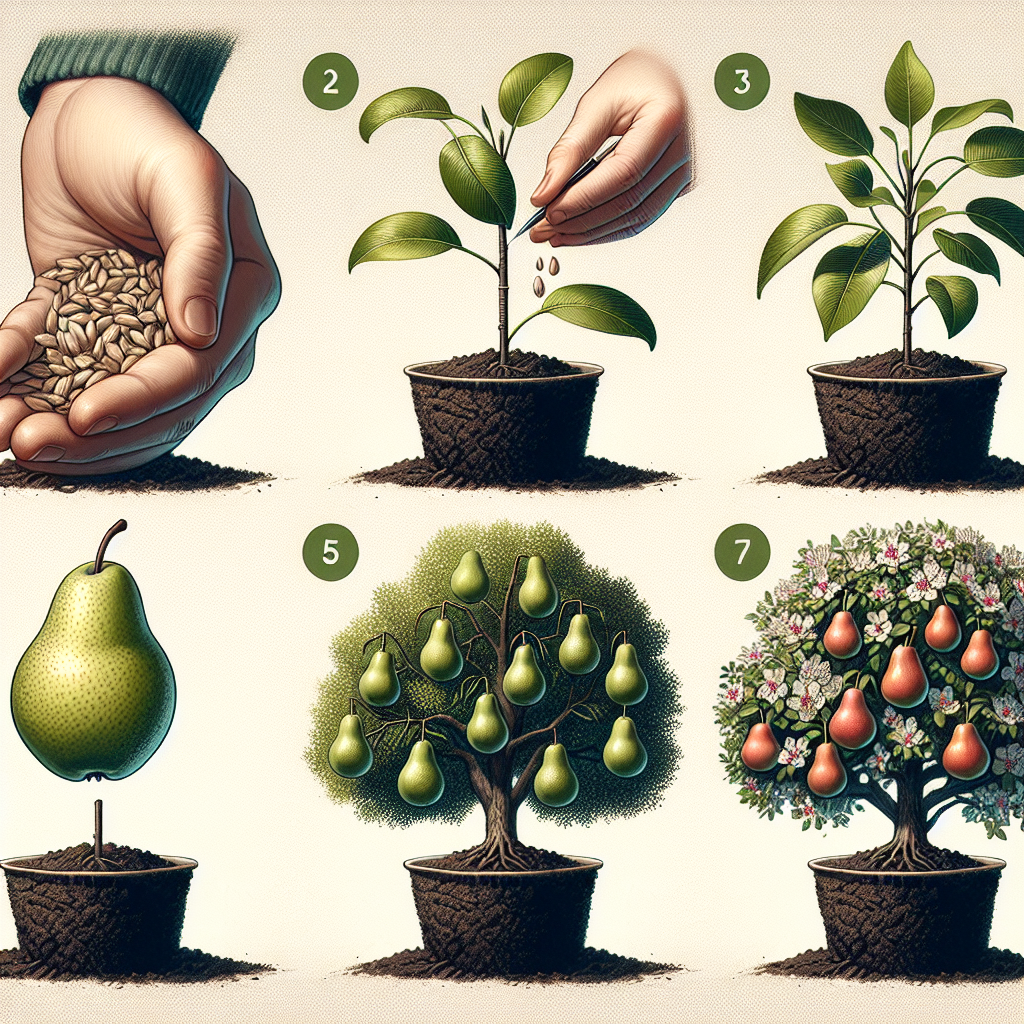Simple Steps for Growing Pears at Home
If you have a passion for gardening and a love for fresh, homegrown fruit, then growing pears at home is an excellent choice. Pears are not only delicious and nutritious but also relatively easy to cultivate. With a little effort and some patience, you can enjoy the sweet and juicy taste of homegrown pears right from your own backyard. In this article, we will guide you through the simple steps for successfully growing pears at home.
Selecting the Right Pear Variety:
The first step in growing pears at home is choosing the right variety. There are many different pear varieties available to choose from, each with its own unique characteristics. It’s important to consider factors such as flavor, disease resistance, and pollination requirements when selecting the variety that suits your needs.
Some popular pear varieties that are well-suited for home gardens include Bartlett, Anjou, Comice, Bosc, and Asian pears like Hosui or Shinseiki.
Finding a Suitable Location:
Pears thrive in full sun and well-drained soil. Selecting an appropriate location for your pear tree is crucial to its success. Ideally, choose a spot that receives at least six hours of direct sunlight daily. Additionally, make sure the soil is fertile and well-draining.
Avoid planting pears in low-lying areas prone to flooding or areas with compacted soil.
Preparing the Soil:
Before planting your pear tree, it’s essential to prepare the soil properly. Start by clearing any weeds or grass from the planting area. Loosen the soil using a garden fork or tiller to improve its drainage and aeration. Adding organic matter such as compost or well-rotted manure can greatly enhance soil fertility, providing necessary nutrients to support healthy growth.
Planting Your Pear Tree:
When it comes to planting your pear tree, timing is key. It’s best to plant pear trees in late winter or early spring when the soil is workable but not frozen. Begin by digging a hole that is wide and deep enough to accommodate the tree’s roots without bending or crowding them. Place the tree in the hole ensuring that the bud union, located near the base of the trunk, is slightly above ground level. Fill the hole with soil, gently but firmly tamping it down to remove any air pockets.

Proper Watering:
Watering your pear tree is essential, especially during its first few years of growth. Young trees require consistent moisture to establish healthy root systems. Provide a deep watering once a week during dry periods, ensuring that the water reaches at least 1-2 feet below the surface. Avoid overwatering as excess moisture can lead to root rot and other fungal diseases.
Pruning and Training:
Regular pruning is crucial for maintaining a healthy and productive pear tree. Prune during late winter or early spring before new growth emerges. Remove any dead, damaged, or diseased branches as well as any crossing branches that may rub against each other.
To encourage proper shaping and structure of your pear tree, consider training it using techniques such as espalier or central leader pruning.
Pest and Disease Control:
Pears are susceptible to various pests and diseases, but with proper care and monitoring, you can minimize their impact on your trees. Regularly inspect your pear tree for signs of pest infestation such as aphids, caterpillars, or mites. If detected early, many pests can be managed using organic insecticidal soaps or horticultural oils.
Diseases like fire blight can be prevented by planting disease-resistant varieties, ensuring good air circulation around trees, regular pruning to remove affected branches, and maintaining overall tree health through proper watering and fertilization.
Harvesting Your Homegrown Pears:
Once your pear tree has matured (usually after 3-5 years), you can start enjoying the fruits of your labor. Pears are typically harvested when they are still firm and slightly green-colored. To check if a pear is ready for picking, gently lift it and twist it horizontally. If it easily detaches from the branch, it’s ready to be harvested.
Harvest your pears carefully to avoid bruising them. After picking, allow them to ripen indoors at room temperature for a couple of days before enjoying their sweet juiciness.
In conclusion, growing pears at home can be a rewarding and enjoyable experience. By selecting the right variety, preparing the soil, providing proper care and maintenance, you can successfully cultivate your own delicious and nutritious pears right in your backyard. So why not give it a try? Start planting today and before long, you’ll be enjoying the fruits of your labor straight from your own pear tree!













